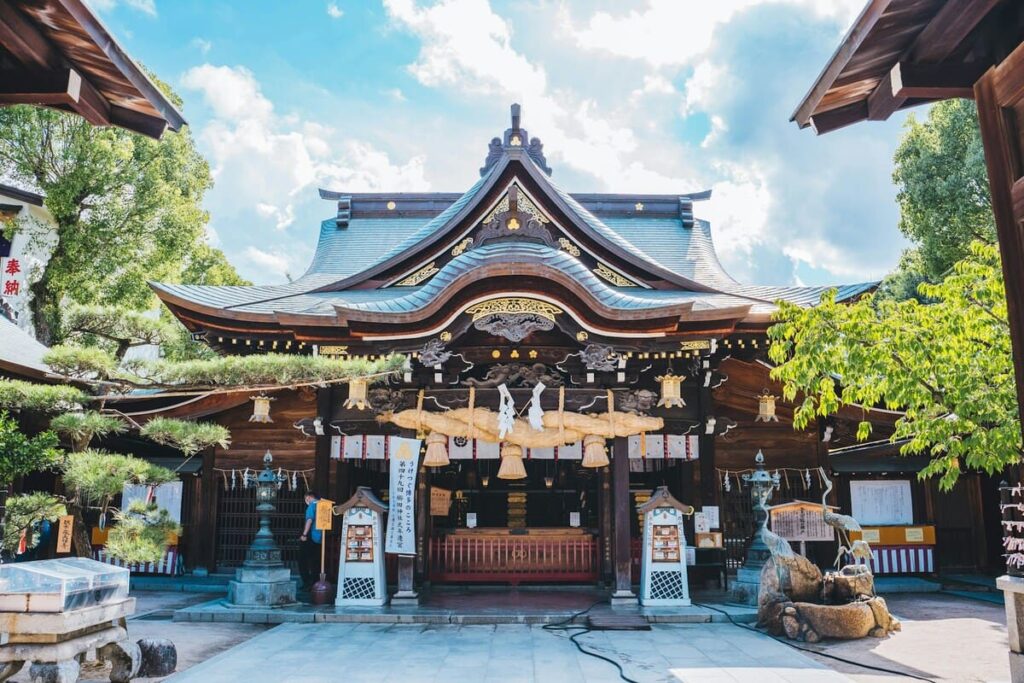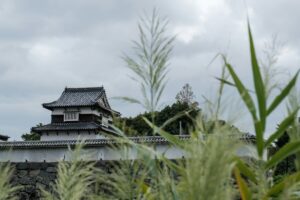Kushida Shrine: A Spiritual Centerpiece in the Heart of Fukuoka

Kushida Shrine, nestled in the bustling city of Fukuoka, is a cherished cultural and spiritual landmark known for its deep historical roots and its role in hosting the vibrant Hakata Gion Yamakasa festival. Established in 757 AD, this Shinto shrine has been a focal point of community life, drawing visitors from all over Japan and the world to engage in its rich traditions and serene atmosphere.
Historical Significance and Architecture
Kushida Shrine was founded over a millennium ago and has since been an integral part of Fukuoka’s cultural fabric. It serves as the spiritual home of the local community and is dedicated to Ohatanushi-no-mikoto, Amaterasu-omikami, and Susanoo-no-mikoto, three important Shinto deities. The architecture of the shrine is a splendid example of traditional Japanese shrine design, featuring a striking torii gate, a beautifully adorned honden (main hall), and several smaller auxiliary shrines. The grounds are a peaceful retreat with old, gnarled trees and stone lanterns that add to its mystic charm.
The Hakata Gion Yamakasa Festival
Kushida Shrine is perhaps best known for its association with the Hakata Gion Yamakasa, one of Japan's most famous festivals, held annually from July 1st to 15th. This dynamic festival is famous for its energetic races, where teams of men carry elaborately decorated floats called "Yamakasa" through the streets of Fukuoka. The floats, some weighing over a ton, are hoisted and raced through the city in a display of physical strength and communal spirit, culminating in a spectacular final race on the morning of July 15th. The shrine serves as the starting and ending point of this race, making it a hub of activity and celebration during the festival period.
Cultural and Community Role
Beyond its festival fame, Kushida Shrine plays a significant role in the daily spiritual life of the community. It hosts various other seasonal festivals and events that reflect the Shinto traditions and the agricultural calendar. Visitors to the shrine can participate in traditional Shinto rituals, receive blessings, and buy charms and amulets that are believed to bring good fortune, health, and safety.
Visitor Experience
Tourists visiting Kushida Shrine can explore its historical exhibits, which include ancient relics, traditional costumes, and other artifacts related to the shrine’s history and the Yamakasa festival. Informational plaques and guided tours are available to educate visitors about the significance of the shrine and its customs. The shrine’s garden is a particularly lovely spot for reflection and offers a contrast to the urban environment surrounding it.
Impact and Legacy
Kushida Shrine is not only a place of worship but also a beacon of cultural heritage in Fukuoka. It provides a window into the traditional Japanese spiritual and cultural practices and continues to play a vital role in educating and uniting the community. Each visit to the shrine offers a unique insight into the heart of Fukuoka’s historical and spiritual identity.
Visiting Kushida Shrine provides a profound glimpse into the ancient traditions that continue to influence and enrich the lives of the Japanese people today. It stands as a testament to the enduring spirit of Japan's cultural heritage, making it an essential destination for anyone interested in exploring the depth of Japan’s religious and festive practices.

